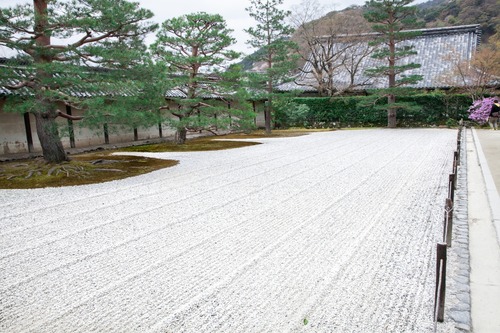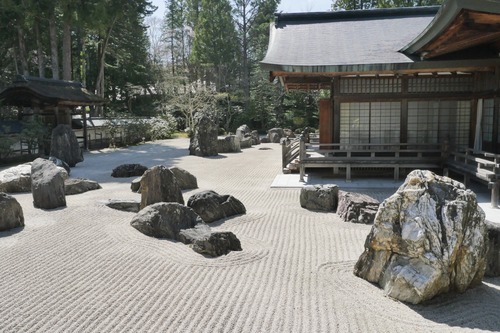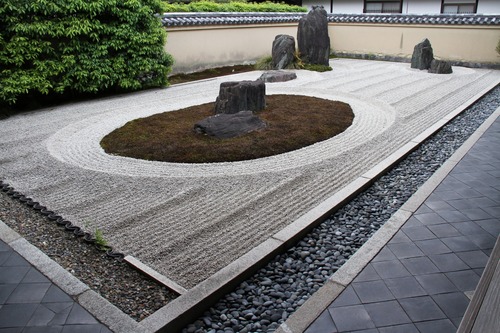









Many of the temples and shrines in Kyoto have dry landscape gardens with a feature called “ameniwa (rain garden).” Ameniwa is a garden where rainwater that falls on the ground is not discharged directly into the sewer system, but is instead poured into a hollow to be stored temporarily and slowly infiltrated.
Ameniwa has many benefits for society, the first being its ability to control flooding. The garden collect rainwater and allow it to slowly percolate into the soil, thus preventing it from instantly flowing into the sewer system. By doing this, it can also prevent water pollution, since rainwater passes through the soil of the ameniwa and pollutants are decomposed and adsorbed. Ameniwa can create valuable habitat space for urban creatures as well, while the water that evaporates from ameniwa can also mitigate the heat island effect.
Since there is no need for landscaping work to install an ameniwa, there is a growing movement in Japan to expand the use of rain gardens in both residential gardens and public spaces. In Kyoto in particular, rain gardens are attracting a lot of attention because they provide an environment for growing plants that are familiar to Kyoto culture, such as fragrant eupatorium and chrysanthemum boreale.
Why don't you try an ameniwa in your home? Please visit our website for a wide selection of tools perfect for the rainy season as well.
Komiya Shoten’s Mira Toray Folding Umbrella
https://www.shokunin.com/en/komiya/
Syouryu's Suzugami
https://www.shokunin.com/en/syouryu/
Ao's Stereoscopic Weaving Towel
https://www.shokunin.com/en/ao/rittaiori.html
References
https://www.city.kyoto.lg.jp/kensetu/page/0000277659.html
https://www.rakuten.ne.jp/gold/sessuimura/c-raintank/ameniwa/
https://www.kyotoliving.co.jp/article/170805/front/index.html
https://mainichi.jp/articles/20181212/k00/00m/040/091000c